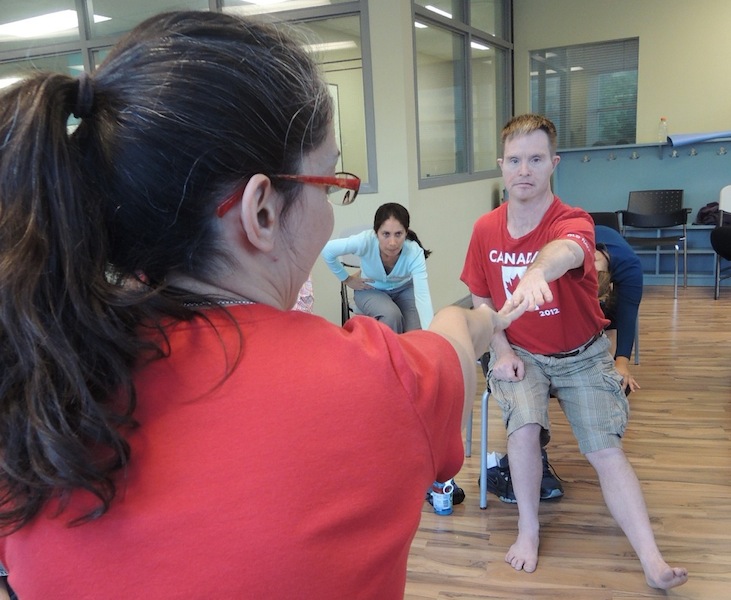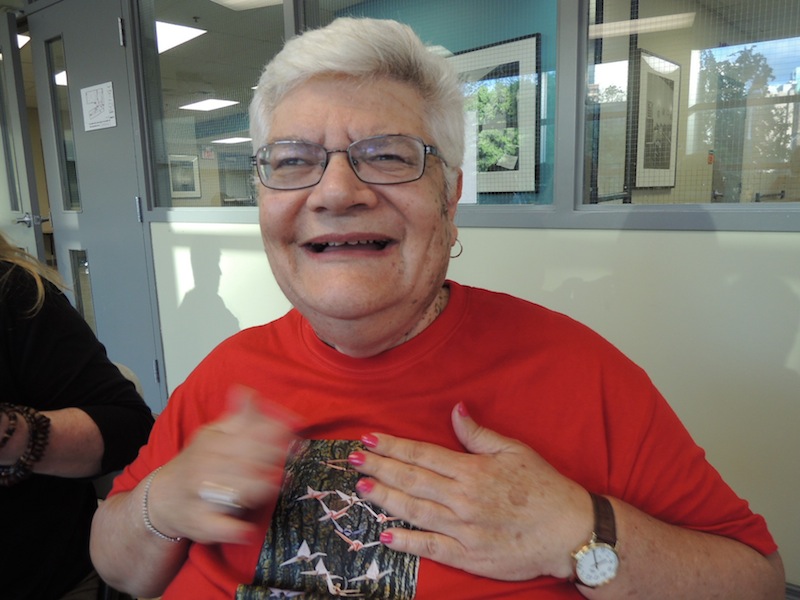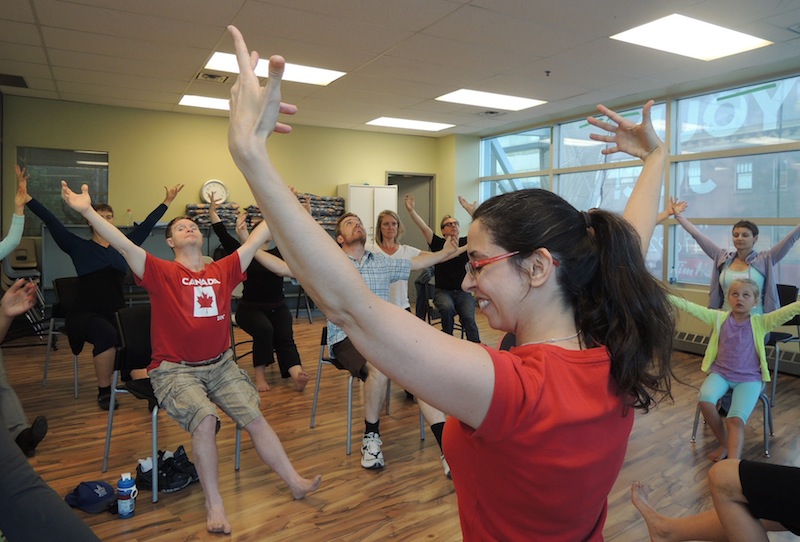It was a windy August night when a group of yoga practitioners gathered in a downtown Toronto room, marking an auspicious event: an all-access yoga class in which everyone — literally — was welcome.
The brainchild of yoga teacher Shana Sandler, “Stretching the Limits” was about dispelling myths and breaking new ground.
“Yoga has a reputation for being an elitist, athletic endeavour. I want to open up the conversation about diversity and accessibility in the yoga community.” Sandler said. “Yoga is inaccessible to people with physical and intellectual disabilities.”
The pre-registered class in Toronto gathered a diverse blend of practitioners — from adults with physical and developmental disabilities to yoga teachers and people from the community.
Sandler, who teaches classes at the Ahimsa Yoga Centre in downtown Toronto, has taught yoga for seniors, children, women fleeing domestic violence and adults with developmental disabilities.
“But, all-access is NOT a special needs class,” she emphasized. “We are not grouping people and making a ‘special’ class. It’s about making yoga more available for more people and bringing people together through yoga.”
Sandler’s one-hour chair yoga class was open to people of all abilities. The class on Aug. 13 featured a wide array of participants: one autistic woman, four yoga teachers, a handful of adults with physical and cognitive problems and their helpers, and other yogini’s.
At the start of the class, Sandler invoked the 20 or so participants to focus on their breath.
“When we breathe, we connect inside and with ourselves. Yoga takes it one step further,” she noted. “You can expand. Yoga has that kind of expansion into the world: be who you are and share that with others. It’s happening right here — people coming together, sharing an experience. That’s the deepest expression of yoga practice.”
Welcoming atmosphere
Sandler went through a series of poses and stretches using the chair. Participants were told to beat their chests, shake their bodies or lean forward from their chair with one leg out and one arm stretched towards her.

Photo: June Chua
During the session, some people would giggle or make noises.
Sandler, ever mindful of making the class as welcoming as possible, incorporated whatever was happening.
“If you feel like making that grrr sound when you open your arms wide, just do it,” she urged. Sandler joined in with the individual, who had grunted, to make the same sound.
After the class, Sandler reflected an all-embracing ambience she hoped permeated the practice.
“I really look at what’s happening in the room because people move intuitively and if [they do something interesting] I think, ‘that’s cool, let’s do that!’ So it’s really validating their experience and their instinct and their bodies.”
Sandler said she noted one of the women was doing a kind of “torso rock” — moving her upper body as if hula-hooping.
“Someone started doing that, so I followed and I thought, oh that feels pretty good!”
In addition to demonstrating poses to the class, she employed a second teacher to show a pose that would be easier to do — that way people don’t always feel they have to follow the teacher’s postures and instead, choose the secondary simpler pose for them.
‘It was at my own level’
As the class was wrapping up, Melanie Hooker of Community Living Toronto gathered the five adults she had brought with her. They were all smiles.
“I think this kind of class is wonderful because it brings all kinds of people together and gets the mainstream community to also see other people who they would normally not be in touch with,” said Hooker.
“Shana is so obviously into yoga and she’s so open. That’s what made the class so good.”
Margaret Bojin, who was preparing to return to her assisted living residence with Hooker, said the class was “a lot of work.”
“But it was perfect for me,” said the 64-year-old who struggles with osteoarthritis and has a cognitive learning disability. “Sometimes I can’t do physical exercise. It was at my own level. When I did it, I felt better [and] more relaxed.”

Photo: June Chua
For Sandler, it was a culmination of many months of work. In the days that followed, she received positive feedback from several participants and interest from the Miles Nadal Jewish Community Centre in offering the class on a regular basis. The JCC had offered up the space that night as a pilot project.
Sandler is also working on introducing all-access classes across the city — hopefully, raising awareness in the yoga community at large for such a need.
“The things that happen out-of-boundary are so cool,” said the yoga teacher, catching a quiet moment post-class.
“The jokes, the sounds that happen are the things we tend to suppress. So there’s this freedom that feels so natural,” she said as her eyes moistened with tears.
“It’s such a beautiful energy.”
June Chua is a Toronto-based journalist who regularly writes about the arts for rabble.ca.
All photos by June Chua.




